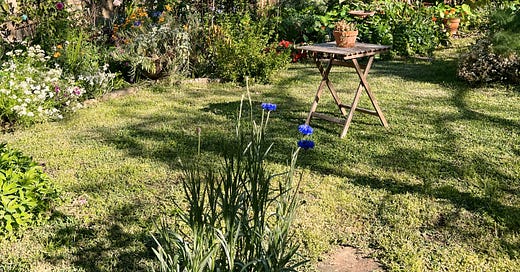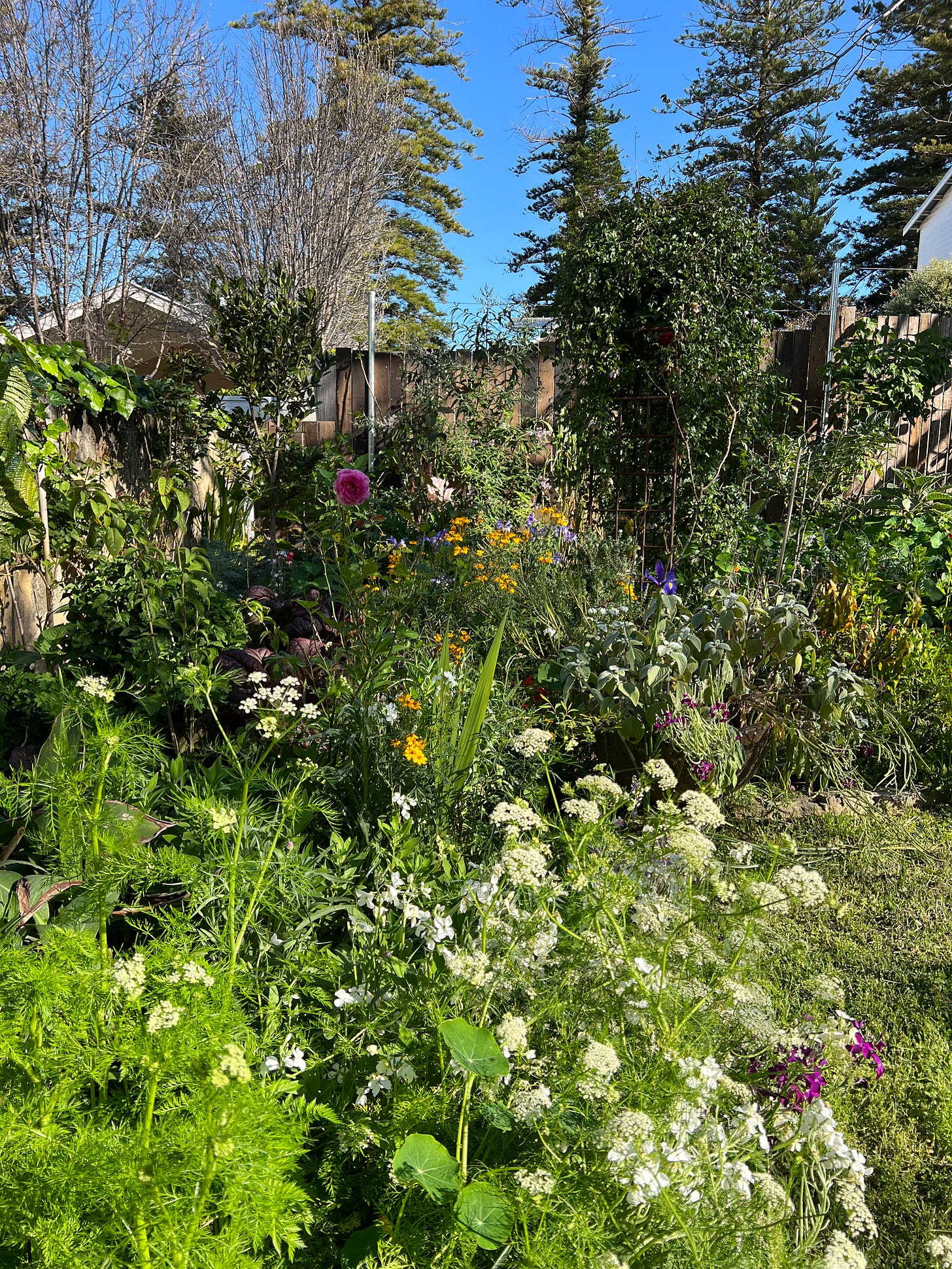Welcome to Lo fi life, a cheerfully unsophisticated newsletter about gardening, cooking and things that are good. Not subscribed yet? Click the button:
Notes:
Today’s newsletter is free to all subscribers (I hope you enjoy it!)
On Thursday, I’ll be sending out an extra email for paid subscribers only. It’s a guide to growing an easy, tough and beautiful flowering shrub that thrives in Perth’s Mediterranean climate. If you’d like to read it, please consider becoming a paying member of Lo fi Life. You’ll be helping me devote more time to bringing you the best recipes and gardening advice I can! :)
If you’d rather stick with a free membership for now, that’s totally fine! You could help me out so much by sharing this newsletter with a friend. I’d love to be able to share my newsletter with more people - your help with that would really mean a lot :) - click the button below to share.
Marie Kondo, much like Google, Windex and - to a certain extent - Rick Astley, has achieved that much sought after, rarefied position in pop culture; her name is so ubiquitous that it has become a verb.
You can ‘Marie Kondo’ your wardrobe, your cutlery, your linen cupboard, even your office supplies. Simply by whittling down your possessions to only those that bring you joy. And honestly? It works surprisingly well.
So often we make up reasons to hold onto things we neither need nor like. We tell ourselves our dodgy old belongings have potential if only they could be fixed/rehomed/repaired/restored. But they don’t bring us joy; they bring us clutter, and our truly valuable possessions get lost under the rubble of many accumulated years of hoarding.
Well, it’s the same in our gardens.
Only it’s worse. Because these aren't inanimate objects we’re clinging onto - these are living entities. Entities that were once thriving, blooming and full of promise. Except now they’re partially dead sticks protruding from the ground; shrubs that have lost all but a handful of leaves; tomato bushes that are slowly being taken over by blight; hotas that are perennially bug-eaten and hydrangeas that never bloody well bloom.
So this week I am giving you permission to Marie Kondo your garden. You aren’t obliged to nurse every single sick plant back to health (and this is coming from someone who regularly buys the sick half-price plants from the garden centre). You don’t HAVE to hang onto the fiddle leaf fig that refuses to grow new leaves. You aren’t under any contract to watch your roses die a slow death from chilli thrip infestation and if you don’t like eating parsnips you should immediately give your seeds away to someone who actually wants to grow them.
Our gardens are meant to be enjoyed, and they are meant to be healthy. And the secret of being a ‘green thumb’ isn’t actually that you don’t kill plants. It’s that you continue to grow and nurture only those plants that you actually like and that will happily thrive in your garden.
And you know what happens when you chuck out the plants that aren’t thriving or making you happy?
You create space for plants that will actually thrive in your garden. Flowering plants that will actually bloom (bringing beneficial insects to your patch), vegetables that you actually want to eat, and plants that don’t need constant mollycoddling (which makes gardening feel infinitely easier and more fun).
A year or so ago I listened to an interview with Monty Don (the English gardener for whom I have nursed a long-held obsession). And he said exactly the same thing. He said if a plant isn’t working or thriving where it’s growing - basically if it isn’t contributing to the garden as a whole - it has to go. It was the best permission I had ever been given to lift my standards about what was and wasn’t allowed to stay in the garden, and it has made our garden a much more beautiful space (it’s made working in the garden much more enjoyable too).
Put it into action
So, this week, take a walk around your garden and look for plants that aren’t earning their keep. Look for:
Plants that are too big/small for the spot they’re in
Plants that are looking stressed or unhealthy (see if you can work out why they’re not thriving while you’re at to - a simple change of location might fix the problem)
Plants that you don’t actually like (be honest now, plants aren’t like you children, you don’t have to love them all equally)
If the plant doesn’t fit the space that it’s growing in the good news is that autumn is the perfect time to dig it up and move it. So, try it in a new spot and see if it works better. If you have a plant that is stressed or struggling due to a lack of sunlight or too much sun, you can shift it to a new spot too.
And the plants you don’t like? Chuck ‘em (or give them to someone who does).
Life is too short and plants are too beautiful to waste your time on a garden that doesn’t make you glow with joy.
Thank you for reading! See you next time for more Lo fi life!
P.S. If you are enjoying my newsletter and know someone else who might like it too, hit the button below to send them a referral. Readers who refer 3 friends will receive a bonus 1 month’s subscription to Lo fi life for free!







Thank you for this permission. We inherited a beautiful but very high maintenance garden and it’s become a real source of guilt for me. And I hate sage! They always look sad and scraggly. Going to convince my husband to help me dig them up and put some green manure seeds down while we figure out what goes where.